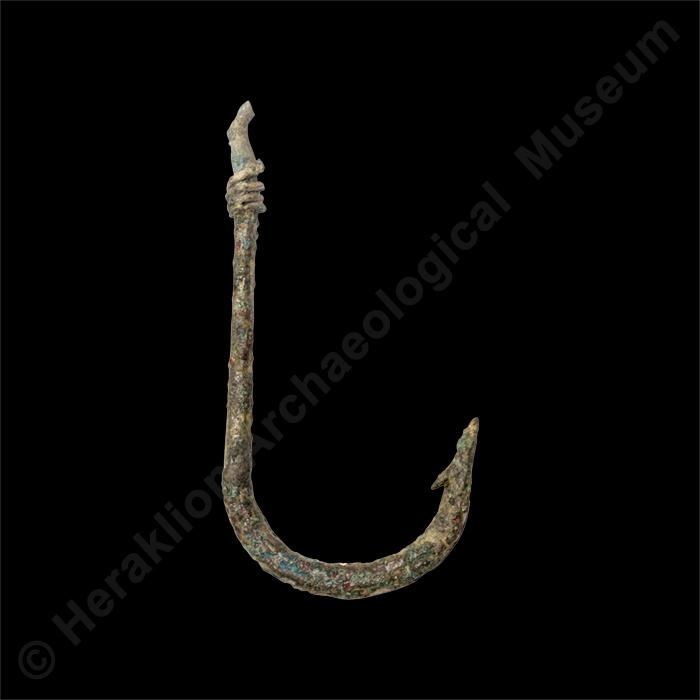Bronze fishhook
Χ946
Metal (Bronze)
Good
Length: 11.5 cm.
Gournia
Settlement
Middle-Late Bronze Age, Neopalatial period. Middle Minoan ΙΙΙ-Late Minoan Ι period:
1700-1450 BC:
Gallery:
VICase:
54Exhibition thematic unit:
Late Bronze Age - Neopalatial period (1700-1450 BC). Private and public life. Bread and circusesDaily Life - Diet
Description
Bronze barbed fishhook with triple winding of bronze wire to attach it to a some sort of shaft or rod. Both the attachment method and its large size indicate that it was used to catch large carnivorous fish such as grouper or tuna. Fishhooks come in different sizes and are used for different purposes, but they are generally used either for fishing from land, off sandy and rocky coasts, or for fishing from a boat close inshore. One of the earliest references to fishing near the shore is found in the Iliad (16. 406-408). Sea fishing was both a subsistence practice and an important economic activity. The fishbones found in excavations come from a wide range of sizes and species, including picarel, anchovy, red porgy, parrotfish, tuna and grouper.Bibliography:
Gerontakou Ε. (2011). Ο ψαράς και η ψαριά του in προϊστορικό Αιγαίο. Τετράδια Εργασίας 33: 11–27 Powell, Judith. "Fishing in the Prehistoric Aegean World." Ancient History Resources for Teachers 22.1 (1992): 5. Mylona, Dimitra. "Fish Processing in the Mediterranean: Varying Traditions, Technologies and Scales of Production with Particular Reference to the Eastern Mediterranean." Journal of Maritime Archaeology 13.3 (2018): 419-436.Author:
K. A.Photographs' metadata
